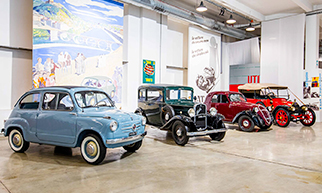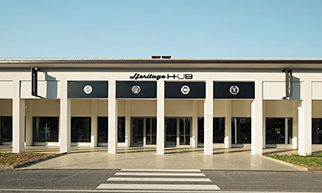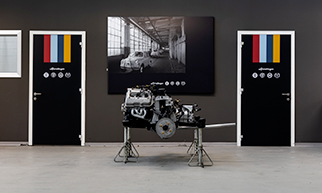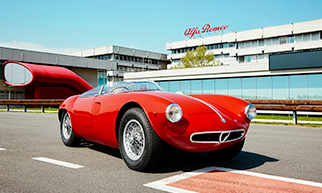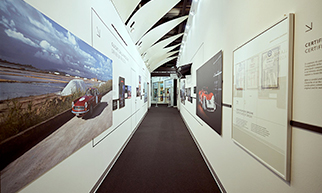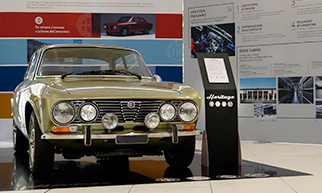An elegant and refined touring car, theAlfa Romeo 6C 2500 Super Sport Aerlux – Coupé Touring Superleggera was selected by an Italo-Mexican businessman to take part in the Carrera Panamericana. It has recently been brought back to life after a lengthy, meticulous and painstaking restoration
The story of this specific car began in Milan on 11 November 1949, when a wealthy Milanese entrepreneur bought a rare Alfa Romeo 6C Super Sport with Touring Superleggera bodywork. The luxurious coupé ennobled by its aluminium body, a trademark of the Milan coachbuilder, featured an original Plexiglas sunroof that gave it the name “Aerlux”, a portmanteau word of two Latin terms meaning 'air’ and ‘light’.
The Alfa Romeo 6C family came to be before World War 2 and, alongside the versions with bodywork produced directly by Alfa, Pinin Farina and Touring, different variants were made: berlinetta, coupé and spider, starting with the Turismo with a long wheelbase (3.25 m) or medium (3 m) Sport chassis. From 1939, Alfa also produced a version with its wheelbase shortened to 2.7 m, fitted with the most advanced mechanics. It was named Super Sport. Fewer than 500 models of the 6C 2500 SS rolled out of the Portello plant, most of them a bare chassis, some destined for the Pinin Farina bodyshop that produced the spiders, others for Touring to kit out the coupé, including only 19 in the Aerlux version.
The mechanics and chassis were truly top-notch: the 2,443-cc in-line 6-cylinder engine had an aluminium cylinder head with two camshafts controlled by chain and gears, three Weber carburettors, four-speed gearbox, drum brakes and independent suspension on all four wheels, a sophisticated component at the time. The 6C 2500 SS with Touring bodywork ensured brilliant performance as well as being an elegant Gran Turismo, as demonstrated by the version renamed “Villa d'Este” after its victory in the prestigious 1949 Concours d'Elegance there.
In September 1951, the Milan entrepreneur's Aerlux changed ownership and was purchased by Carlo Panini Binosi, a native of the province of Mantua, Italy who later became a wealthy businessman in Mexico, where he was known as Don Carlos. A great enthusiast for motoring and aviation, after traveling around the world aboard a tourist plane, he founded the first Mexican airline: Servicio Aéreo Panini.
He had no less passion for motorsport, leading him to buy the elegant but fast Aerlux that he had developed in Milan – at Alfa Romeo and Touring – to improve its performance and transform it into a racing car. The intent was to take part in one of the most gruelling races in the world, held in his adopted home: the Carrera Panamericana.
His unusual choice of a car not specifically created for racing may have been the result of Piero Taruffi and Isidoro Ceroli’s fourth placing in the first race at the wheel of the Alfa Romeo 6C 2500 Sport “Freccia d'Oro”. They drove brilliantly, making the car stand out among a panoply of American cars fitted with massive V8 engines with much higher displacements.
Don Carlos enrolled in the second race with his daughter Teresa. However, she was listed as the driver, with him as the co-driver. As was often the case at the time, the story didn't end well: while at the wheel, Panini lost his life, with Teresa only suffering minor injuries, having been taken to hospital by another competitor who gave up on the race to help them.
But like in an engaging film script, the remnants of the car were recovered in 2013 by a collector who already owned another Alfa Romeo 6C. He succeeded in the exhausting but exciting task not only of its restoration but also of the reconstruction of its entire history down to the original documents, still held by Panini’s nephew, Teresa’s son, who lives in France.
The team of professionals from the Stellantis Heritage team, together with brand experts, also conducted a thorough analysis to deliver a Certificate of Authenticity.
